Saturday, June 25, 2011
The Jersey History of the Winnipeg Jets 1972-1996
With the seventh pick in the 2011 NHL Draft, the Winnipeg NHL franchise selected...
the name Winnipeg Jets.
We heard speculation ranging from the True North ownership group keeping the Manitoba Moose name and identity intact for their new NHL franchise, to the use of the historic name Winnipeg Falcons, the first team to win an Olympic gold medal for ice hockey back in 1920, or the choice of the brand new name Winnipeg Ice, with a polar bear logo while using a main color of light blue, as well as the rumored return of the classic name Winnipeg Jets, which was the obvious clear fan favorite.
The Winnipeg Jets name dates back to 1967 and a junior franchise which played in the Western Canada Hockey League. With the arrival of the professional WHA franchise, the junior team changed it's name to the Winnipeg Clubs in 1973-74, followed by the Winnipeg Monarchs in 1976-77 for a single season prior to relocating, when they became the Calgary Wranglers for 10 years. After one more move, the club became the Lethbridge Hurricanes in 1987, where they still compete today.
With the formation of the World Hockey Association back in 1972, the new professional franchise adopted the name Jets, and they immediately rocked the hockey world by signing one of the biggest stars of the NHL, Bobby Hull of the Chicago Black Hawks.
The Jets first jerseys were a simple blue sweater with white/red/white stripes around the arms and waist and sported a Jets wordmark on the front created with beautiful chain stitching accented with an overly detailed hockey player inside the J. The most unique aspect of the initial Jets sweaters was the treatment of the chain stitched name on the back. A unique rounded and color-contrasting nameplate carried the player's name in an unusual font, reminiscent of comic sans, which made it appear almost hand written. The white home jerseys also had contrasting nameplates done in an arresting red color.
(This example was prepared for use but never received a red nameplate)
This jersey set would only be used for one season until being replaced by new sweaters for year two which coincided with the arrival of Swedish sensations Anders Hedberg and Ulf Nilsson, who combined with Hull to form the most prolific line of the decade in either the WHA or the NHL.
While the basic jersey striping pattern remained the same, a new round logo filled the front of the jersey, which gave the sweaters a much more clean and modernized look compared those of the previous season.
The Jets would wear patches on each shoulder in 1975-76 in celebration of the Summer Olympics to be held in Montreal, Canada in the summer of 1976. The franchise would also win the Avco World Cup as champions of the WHA for the first time that same season.
While the white jerseys had a blue shoulder yoke since their inception, the blue road jerseys were a solid color until 1977-78, when a white shoulder yoke was added for the first time. The team would also win their second Avco World Trophy at the conclusion of the season and repeated as champions in 1978-79 by winning the final game in the history of the WHA.
The WHA had started out with 12 teams in 1972-73 and grown to a high of 14 teams by 1974-75, the league suffered from instability and frequent franchise relocation, which led to franchises folding with greater frequency as the league shrank to 12, then 10 and finally seven clubs in 1978-79. After the conclusion of the 1978-79 season, four of the six surviving clubs were allowed into the NHL as expansion teams under highly restrictive, nearly crippling, stipulations which affected the Jets more than any other of the four surviving WHA clubs.
While the Hartford Whalers (73 points) and Edmonton Oilers (69 points) qualified for the playoffs during their first season in the NHL in 1979-80, the Quebec Nordiques missed out on the playoffs with 61 points and the Jets tied for last place in the league with the moribund Colorado Rockies with 51 points just one year removed from back-to-back WHA championships.
To celebrate their move to the NHL, the Jets took the opportunity to revamp their jerseys, introducing an entirely new (to them) jerseys which featured full length sleeve striping, a pattern formerly used by the New York Rangers while under the control of general manager John Ferguson, who now held the reins in Winnipeg. One unique feature of the jersey was the extremely thin font used for the names on the back.
This style would serve the Jets well through 11 seasons until 1989-90. In 1981-82 the team would wear a Ten Seasons patch. The 1987-88 season would see the addition of the first Goals for Kids patch on the right arm as well as a thickening of the lettering used for the names on the back, something long overdue for readability. The following year the Goals for Kids patch would be revamped, making the lettering bolder and easier to read.
In 1990-91, the Jets jerseys underwent their final redesign, with bold waist and arm stripes trimmed with thinner red stripes replacing the full length arm stripes. Additionally an attractive new modernized logo was unveiled, creating a new and exciting, yet simple and classic look at the same time, aided in part by the choice of single color names and numbers in an era where only three other of the 20 teams opted for one color numbers, Original 6 clubs Detroit and Toronto as well as Quebec.
The Goals for Kids patch was also modernized at the same time and was worn through the remainder of the club's tenure in Winnipeg. The other patches worn on this style jersey were the NHL 75th Anniversary patch in 1991-92 and the Stanley Cup Centennial patch in 1992-93. Unusually, all the teams wore the patch with a bold white outline, save for the Jets, who during the second half of the season, wore a version of the patch without the white outline after having done so during the first half of the season.
The final season of the Jets in Winnipeg saw them wear the Cherished Memories patch for the final ten games of the regular season and their playoff series against Detroit before the club's sale and relocation to Phoenix for the 1996-97 season.
With the recent announcement that the Atlanta Thrashers had been sold to a group from Winnipeg who would be moving the team to Manitoba, speculation over the name of the club had been talked about since the announcement on May 31st. Finally last night during the first round of the 2011 NHL Draft, team chairman Mark Chipman simply announced that club general manager Kevin Cheveldayoff would make their pick "on behalf of the Winnipeg Jets", sending the many fans who made the trip down to St. Paul from Winnipeg into a loud celebration on the confirmation of the name that everyone wanted to return for over 15 years.
The team did not, however, unveil their team colors, logo or jersey, as first round draft pick Mark Scheifele wore a generic black and silver jersey adorned with the NHL logo when posing for photos with Jets executives on stage.
Time will tell if the new Winnipeg Jets will continue the use of the original Jets red, white and blue colors or claim a new set of colors in an effort to distinguish the new era of hockey in Winnipeg.
Today's video section begins with Teemu Selanne scoring the goal which broke Mike Bossy's 15 year old rookie scoring record in two parts.
Next, last night's announcement of the choice of the name Jets for the relocating franchise and the team's use of the generic black NHL jersey for draft pick Scheifele. The footage of Scheifele's proud mother was one of the highlights of the entire evening.
Labels:
2011 NHL Draft,
Winnipeg Jets
Subscribe to:
Post Comments (Atom)

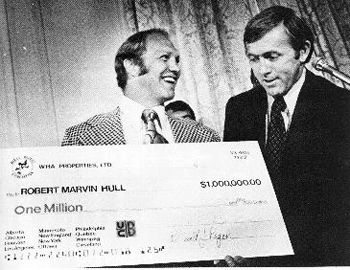


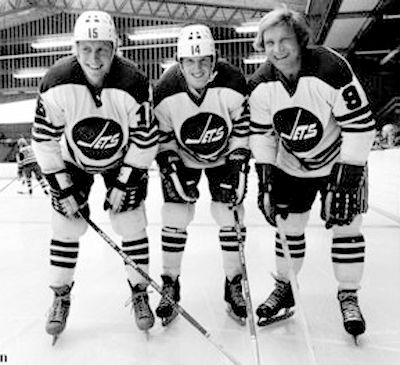
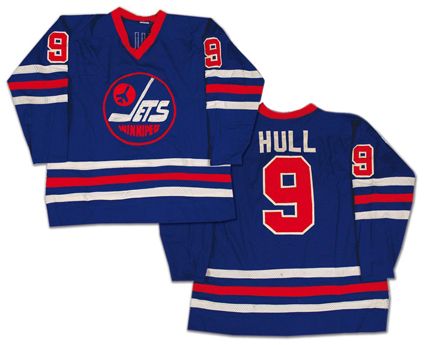
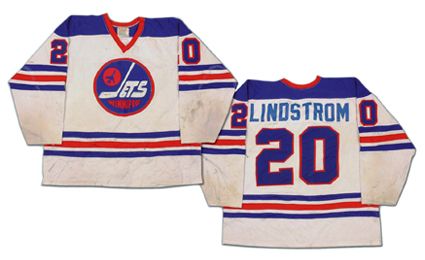
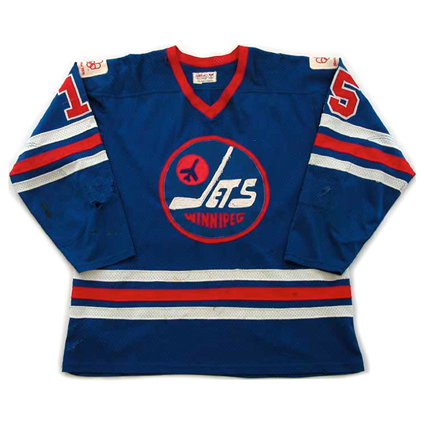

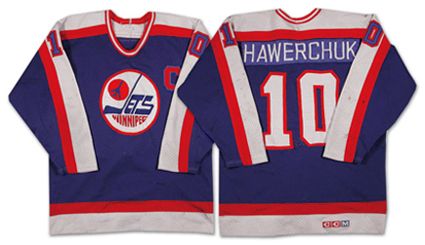
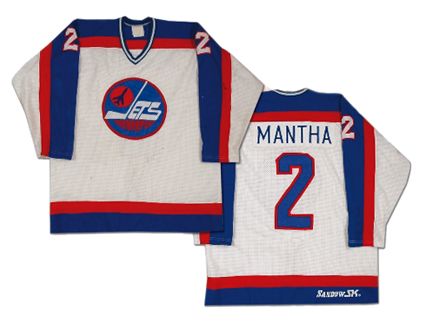
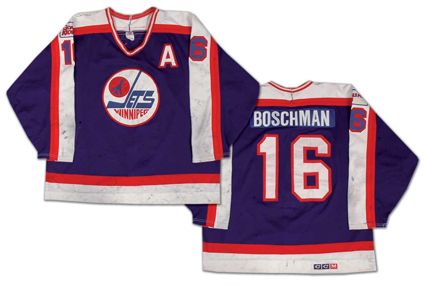




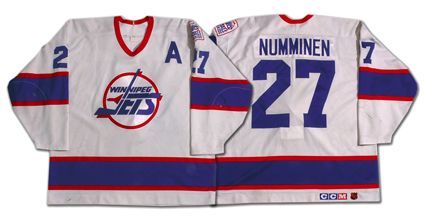

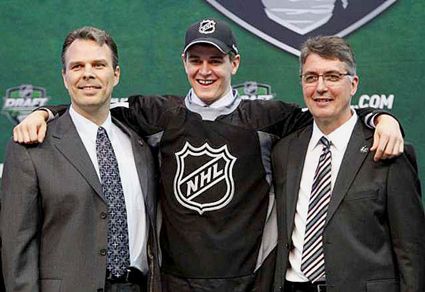










No comments:
Post a Comment
We welcome and encourage genuine comments and corrections from our readers. Please no spam. It will not be approved and never seen.